High altitudes help slow down Antarctica’s warming
18 May 2017
When it comes to climate change, the Arctic and the Antarctic are poles apart. At the north of the planet, temperatures are increasing twice as fast as in the rest of the globe, while warming in Antarctica has been milder. A new study published in Earth System Dynamics shows that the high elevation of Antarctica might help explain why the two poles are warming at different speeds. At and around the North Pole, in the Arctic, the ice is mostly frozen ocean water, also known as sea ice, which is only a few meters thick. In the Antarctic, however, the situation is very different: the ice forms not just over sea, but over a continental land mass with rugged terrain and high mountains. The average height in Antarctica is about 2,500 metres, with some mountains rising as high as 4,900 metres. Marc Salzmann, a scientist working at the University of Leipzig in Germany, decided to use a computer model to find out what would happen if the elevation in Antarctica was more like in the Arctic. He discovered that, if Antarctica were flat, there would be more warm air flowing from the equator to the poles, which would make the Antarctic warm faster. As Antarctica warms and ice melts, it is actually getting flatter as time goes by, even if very slowly. As such, over the next few centuries or thousands of years, we could expect warming in the region to speed up.Find out more
Discuss with your teacher or parents
What is climate change and what is causing it?
Other than the differences in height, why is the Arctic warming much faster than the
Antarctic and the rest of the globe? Here’s some help from the NASA Climate Kids page
at egu.eu/7KST6H.
What are computer models and how are they used in science?
Print version
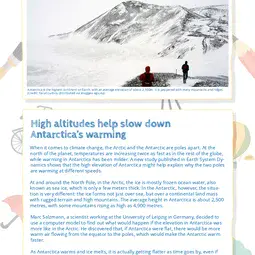
This is a kids' version of the EGU article: 'High altitudes help slow down Antarctica’s warming'. It was written by Bárbara Ferreira (EGU Media and Communications Manager), reviewed for scientific content by Timothy Lane (Liverpool John Moores University, UK) and Kirsty Pringle (Research Fellow, University of Leeds, UK), and for educational content by Monica Menesini (Teacher, Liceo Scientifico A. Vallisneri, Lucca, Italy).
Translations
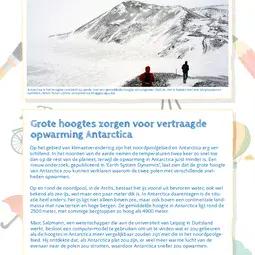
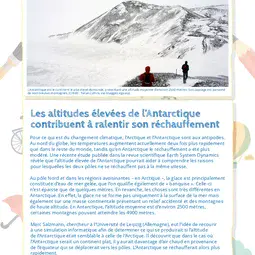
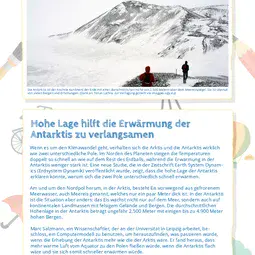
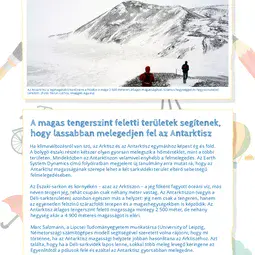
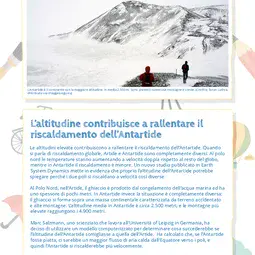
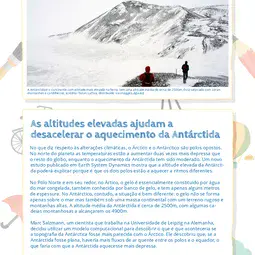
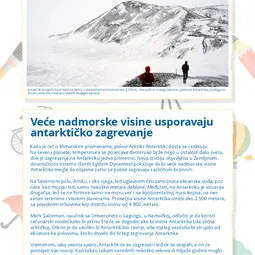
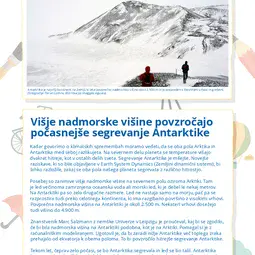
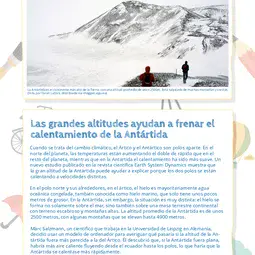
All English-language Planet Press releases are carefully edited, reviewed and proofed, by scientists, educators and EGU staff. Please note that once translated, Planet Press releases receive no further checks from EGU staff. For this reason, we cannot guarantee their accuracy, though we trust the quality of our voluntary translators and are grateful for their work.

